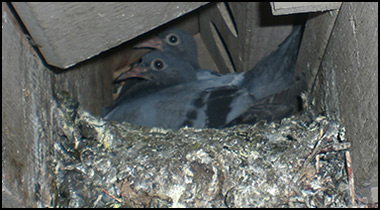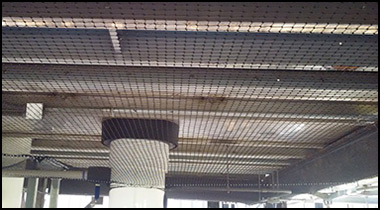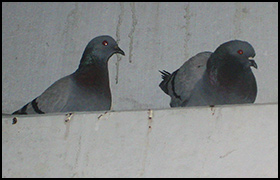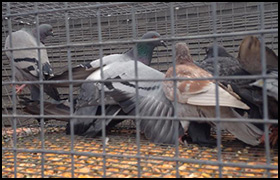St. Paul Bird Control
Welcome to Bird Removal of St. Paul! We specialize in the humane and effective resolution of human/bird conflicts in the St. Paul metro region, and throughout Minnesota. Whether you have a single bird in a building, or need to prevent pigeon roosting (and bird droppings) on a large architectural project, we can solve your St. Paul bird problem effectively and professionally. We install exclusion materials to keep birds away, and even provide pigeon trapping as a means of St. Paul bird removal. We are not a pest control company, but rather wildlife, bat, and bird specialists only. Click on our St. Paul Prices page to find out more about our prices for bird control work. You can also read the topics addressed on this website to learn more about how to resolve your specific bird conflict. We look forward to hearing from you.

St. Paul Bird Removal & Structural Repairs

Exclusion Netting & Spike Installation

Minnesota Bird Trapping & More
Call 24/7 to discuss your St. Paul bird problem.
Same-day or next-day appointments: 763-703-2600
Thorough inspection of your property.
Written estimates for bird project.
Fully Minnesota licensed and insured.
Structural bird exlusion netting.
Anti-roosting spikes and shock track.
Aurel dispersion and bird harrassment.
Bird dropping cleanup and sanitation services.
Bird damage repair and building exclusion.
Our Service Range - 763-703-2600



What is a pigeon’s mating habits?
Pigeons are also called rock doves and they are always considered annoying in the city and when in the farm. It was introduced in the northern part of America to Europe years back, they have been linked with humans for so many years now. They were said to have been the very first domesticated type of bird, they were raised for meat during the ancient Egypt. They have various colors because of the breeding done by humans. They are the offspring of the wild Rock Dove of Europe. In terms of mating, the pigeons are monogamous by nature. They breed in succeeding seasons as long as the pair are both alive. This is the reason why pigeon infestation must be dealt with at the onset of the problem. They can multiply right away and you will have problems with the droppings later on.
Most of the pigeons will try to raise a lot of babies yearly, oftentimes they give birth to more than 5 in a year. The breeding season of pigeons may be all throughout the year if the climate condition favors them. There may be some slowing down in terms of mating during winter time. In terms of their nesting habits, that may be a little bit different. The male picks a site in favor of the female, it will pick a stick and then it will bring it back, it will lay it in front of the partner. The female who will be staying at the roosting site will accept the stick that the male brought to her and then it will be placed under her. The nest of the birds may be found on the ledge of the buildings, beams and under the barn.
The nest of the pigeons is typically saucer in shape and it is made up of piles of leaves and stems. The female pigeon might sit on the nest for a day or 2 before she lays the very 1st egg. Normally, she will lay two white eggs. Both the male and the female will hatch the eggs, but the female will do the incubation at night time. The incubation period will last for more than eighteen days and the baby will leave the nest after twenty-five to twenty-nine days after the incubation. Primarily, the baby will be milk feed, it is composed of a thick fluid coming from the crops of the parents. For more than ten days, the baby will be fed increasingly each day until such time that the baby is able to eat solid foods. The birds usually eat on the ground and they can be persuaded to the platform feeders, thus they can be offered cracked corn and other grains that they will find attractive.

